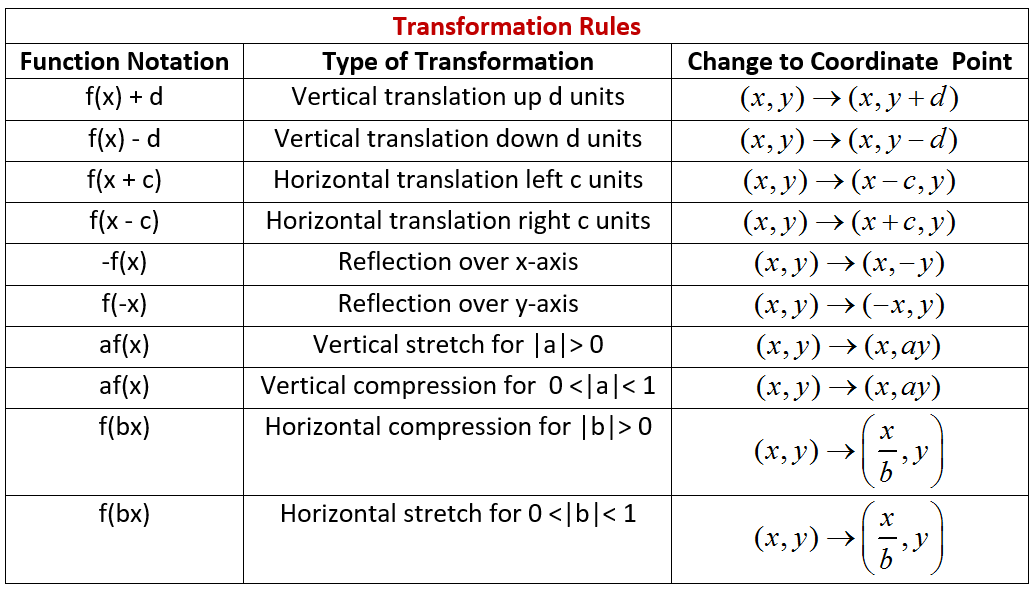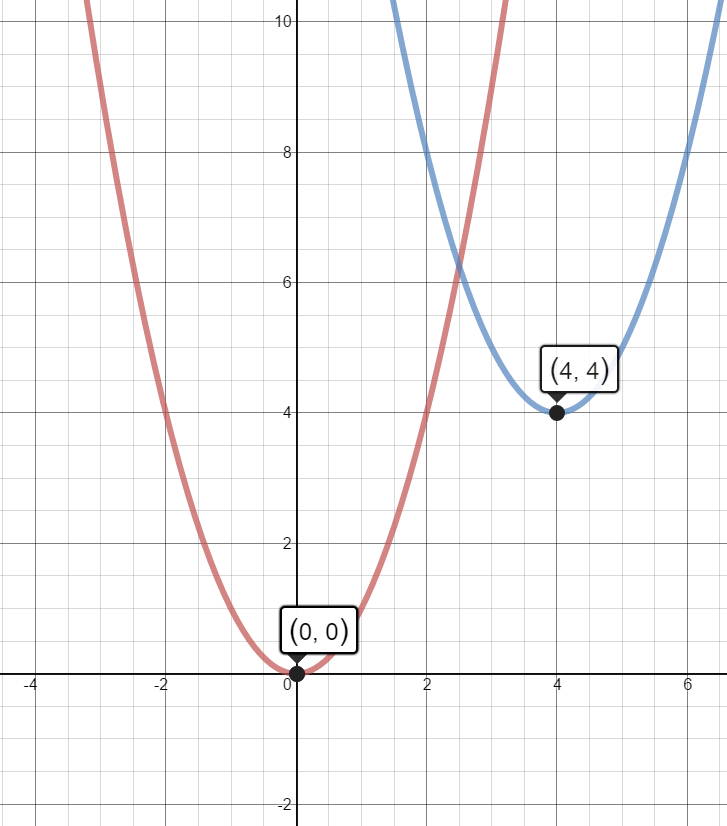

This type of transformation shifts the left or right relative to the parent graph. The graph will shift up if we add positive constant to each y- coordinate whereas the graph will shift down if we add negative constant. This type of transformation shifts the graph up or down relative to the parent graph. The first transformation is vertical transformation.
GRAPH TRANSFORMATIONS HOW TO
Here, we will discuss how to graph transformations. When a graph of a function is changed in appearance or location, we call it a transformation. In each of these situations, transformation affects the basic function in certain ways that can be calculatedįunction transformations are mathematical operations that cause change in the shape of a graph. Many issues arise in the form of stretching the function f(x) by c units, shifting the function f(x) by c units, or rotating the function f(x) by x units about x- axis,y- axis, or z-axis. Sometimes graphs are stretched, rotated, translated, or moved about the xy plane.

Function graph transformation is an usual kind of problem in algebra, specifically the modification of algebraic equations. Translation Transformation - Translation transformation slides or moves the object in the space by keeping its size and orientation the same.įunction graph transformation is a process through which a graphed equation or existing graph is modified to obtain the variation of the preceding graph. Reflection Transformation - Reflection Transformation flips the object across a line by keeping it size or shape constant.ĭilation Transformation - Dilation transformation enlarges or shortens the object by keeping its shape or orientation the same. Rotation Transformation - Rotation Transformation rotates or turns the curve around an axis without changing the size and shape of an object. The four types of transformation of function are : The alternatives of the term transformation may simply imply that the geometric features of functions are considered ( for example in terms to variants).

Transformation can be an invertible function from set A to itself, or from set A to another set B. Transformation in other areas of Mathematics simply refers to any function, regardless of domain and codomain. In Mathematics, transformation statement function is a function f that maps set A to itself i.e. There are four types of transformation namely rotation, reflection, dilation, and translation In this article, we will discuss how to do transformation of a function, function graph transformation, and how to graph transformation function. For example, translating a quadratic graph (parabola) will move the axis of symmetry and vertex but the overall shape of the parabola stays the same. In Mathematics, a transformation of a function is a function that turns one function or graph into another, usually related function or graph. Most probably, you must have encountered each of their terms earlier, but here we will merge the concepts together. Here, we will look at some of the important concerts related to function and transformation of functions. Suppose the function f maps x ∊ Y to y ∊ Y. Euler was the first to use modern representation f(x) ( read “ f of x) to determine the value return by a function given by an argument x.

A function is defined as a map that maps each element in the domain to exactly one element in the codomain. A function f from domain X to domain Y is represented as f : X → Y.


 0 kommentar(er)
0 kommentar(er)
